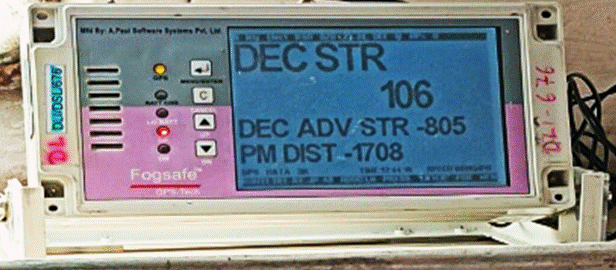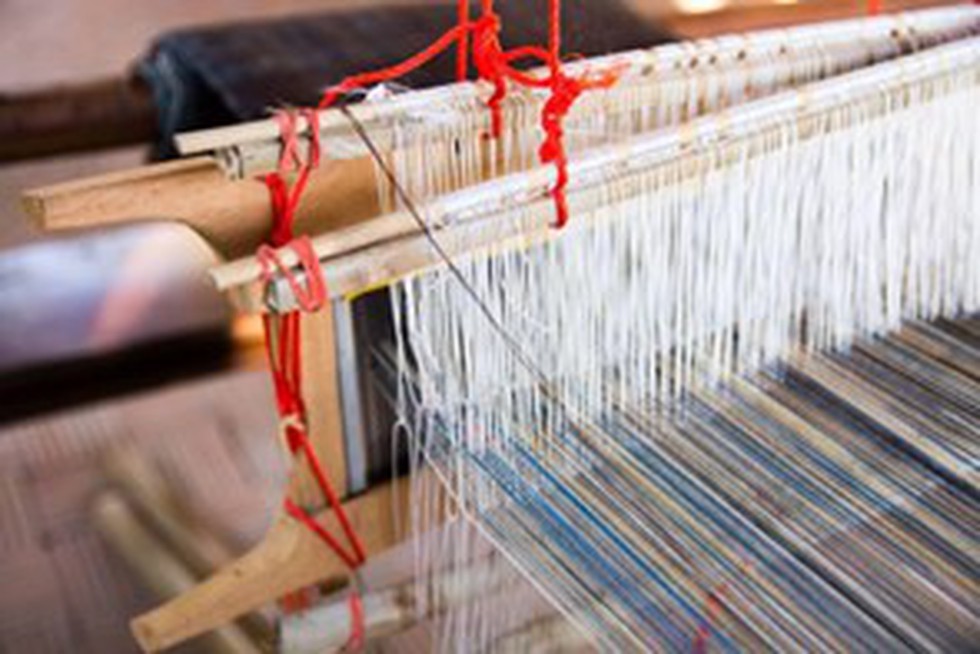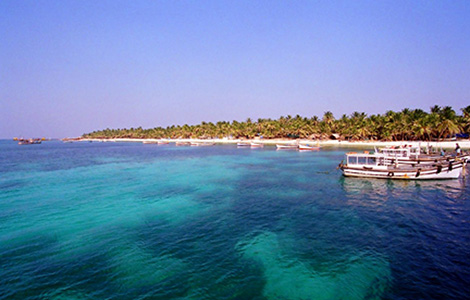
About Kochi-Lakshadweep islands submarine optical fiber connection project:
- It is the submarine cable connectivity project from Mainland (Kochi) to eleven Lakshadweep Islands namely, Kavaratti, Agatti, Amini, Kadmat, Chetlet, Kalpeni, Minicoy, Androth, Kiltan, Bangaram and Bitra has been extended.
- The project is funded by Universal Services Obligation Fund (USOF), Department of Telecommunication.
- Bharat Sanchar Nigam Limited (BSNL) was the Project Executing Agency and the work was awarded to M/s NEC Corporation India Pvt Ltd through Global Open Tendering process.
- The major activities related to the project include Marine Route Survey, Submarine Cable laying, Civil Construction of CLS stations, Installation, Testing and Commissioning of End Terminals (SLTE).
- Significance of the project
- The KLI-SOFC project will lead to an increase in internet speed unlocking new possibilities & opportunities.
- For the first time since independence, Lakshadweep will be connected through Submarine Optic Fibre Cable.
- The dedicated submarine OFC will ensure a paradigm shift in communication infrastructure in the Lakshadweep islands, enabling faster and more reliable internet services, telemedicine, e-governance, educational initiatives, digital banking, digital currency usage, digital literacy etc.

- It is a state of the art, mega science international facility to build the world’s biggest and most sensitive radio telescope for addressing a wide variety of cutting-edge science goals.
- The SKAO, collocated in Australia (SKA-Low) and South Africa (SKA-Mid) with operational headquarters in the UK, is expected to revolutionize radio astronomy, while driving the growth of many important new state-of-the-art technologies.
- Ten countries involved are - Australia, Canada, China, India, Italy, New Zealand, South Africa, Sweden, the Netherlands and UK.
India and SKAO
- Subsequent to this approval, India will be signing the SKAO treaty to become a full-fledged member of the SKA Observatory and thus join the growing list of countries participating in the project.
- This approval covers funding support for the construction phase of the international SKA Observatory (SKAO) spread over the next 7 years.
- The project will be jointly funded by the Department of Atomic Energy (DAE) and Department of Science and Technology (DST), with DAE as the lead agency.
- The Indian participation in SKA is a truly nationwide, inclusive project led by a consortium of more than 20 academic and research institutes (with NCRA-TIFR as the nodal institute).
- During the design phase of the SKA (2014-2020), India has contributed actively to the project, with a lead role in the successful design of the complex Telescope Manager system.
- In the subsequent early prototyping phase, India was actively engaged in three areas of work namely Telescope Manager package, SKA-Low digital hardware package and Science Data Processor work package.
- Participation in this project will open up possibilities for development of niche skills in Indian industry and research organizations in different areas of next generation technologies, such as modern antenna design, sophisticated cryogenic receiver systems, and high volume optical fibre data transport technology etc.

About SMART 2.0 program:
- Scope for Mainstreaming Ayurveda Research among Teaching professionals (SMART) program promotes robust clinical studies in priority areas of Ayurveda with Ayurveda academic institutions/hospitals across the country through mutual collaboration.
- The objective of ‘SMART 2.0’ is to generate a tangible evidence to demonstrate efficacy and safety of Ayurveda interventions using interdisciplinary research methods and translating it into public health care.
- The study aims at safety, tolerability and adherence to Ayurveda formulations in the priority research areas of Bal Kasa, malnutrition, insufficient lactation, Abnormal Uterine Bleeding, Osteoporosis in post-menopausal women and Diabetes Mellitus (DM) II.
What is CCRAS?
- It is an autonomous body of the Ministry of AYUSH (Ayurveda, Yoga & Naturopathy, Unani, Siddha and Homeopathy), Government of India.
- It is an apex body in India for the formulation, coordination, development and promotion of research on scientific lines in Ayurveda and Sowa-Rigpa system of medicine.
Key facts about National Commission for Indian System of Medicine
- It is the statutory body constituted under NCISM Act, 2020. An Act to provide for a medical education system that improves access to quality and affordable medical education, ensures availability of adequate and high quality medical professionals of Indian System of Medicine in all parts of the country.
- Composition: It consists of 29 members, appointed by the central government. A Search Committee will recommend names to the central government for the post of Chairperson, part time members, and presidents of the four autonomous boards set up under the NCISM.
- Functions
- Framing policies for regulating medical institutions and medical professionals of Indian System of Medicine
- Assessing the requirements of healthcare related human resources and infrastructure.
- Ensuring compliance by the State Medical Councils of Indian System of Medicine of the regulations made under the Bill
- Ensuring coordination among the autonomous boards.

About Sikki Grass:
- Sikki grass belongs to the zizanoides grass family.
- It is a rich yellowish variety of reed grass, locally known as ‘Kaincha’ is called Golden Grass due to its golden luster on drying.
- Scientifically called Chrysopogon zizanioides, it finds mention in ancient Sanskrit texts such as the Ramayana, where it is referred to as viran, sugandhimool, ushir and nalad.
- This grass grows indigenously in the Tarai regions of Uttar Pradesh and Bihar and has an average height of 3-4 feet.
- While the stem is used to make artefacts, the roots are used for extracting oil that is used both for perfumery and medicinal purposes.
- In the hilly terrains, it is also now grown to arrest soil erosion.
- Sikki got the geographical identification tag in 2018.
- Uses:
- It is most known for its handicraft. It has been a source of livelihood for many since antiquity.
- It is used to make traditional items such as multipurpose baskets, ornaments, show pieces and many more utility items that are still considered valuable in rural India.
- Challenges
- One of the serious challenges that Sikki craftsmen are facing currently is the brunt of climate change that has impacted the quality of the grass.
- The deteriorating quality of grass due to continual spike in temperature that impacts the softness of Sikki.
- Brittle grass needs extra processing time and is not suitable for making baskets or other artefacts.

About Fog Pass Devices:
- It is a GPS based navigation device that helps the loco pilot to navigate during dense fog conditions.
- It provides on-board real-time information (Display as well as voice guidance) to Loco Pilots regarding location of fixed landmarks such as Signal, Level Crossing gate (Manned & Unmanned), Permanent Speed Restrictions, Neutral Sections etc.
- It displays approach indications of next three approaching fixed landmarks in geographical order accompanied with voice message approximately 500m on approach.
- General features of Fog Pass Device
- Suitable for all types of sections like single line, double line, electrified as well as non electrified sections.
- Suitable for all types of electric and diesel locomotives, EMUs/MEMUs/ DEMUs.
- Suitable for train speeds up to 160 KMPH.
- It has built-in re-chargeable battery back-up for 18 hrs.
- It is portable, compact in size, light in weight (not more than 1.5 Kg including battery) and of robust design.
- Loco Pilot can carry the device easily with him to the locomotive on resuming his duty.
- It can be easily placed on the cab desk of locomotive.
- It is a standalone system.
- It is unaffected by weather conditions like Fog, Rain or Sunshine.

About Swadesh Darshan Scheme:
- It was launched in 2015 by the Ministry of Tourism, Government of India, to develop sustainable and responsible tourism destinations in the country.
- It is 100% centrally funded scheme.
- Under the scheme, the Ministry of Tourism provides financial assistance to State governments, Union Territory Administrations or Central Agencies for development of tourism infrastructure in the country.
- Operation & Maintenance (O&M) of the projects sanctioned under Swadesh Darshan Scheme is the responsibility of the respective State Government/UT Administration.
- Swadesh Darshan 2.0:
- The Ministry of Tourism has revamped its Swadesh Darshan scheme as Swadesh Darshan 2.0 (SD2.0) for development of sustainable and responsible tourist destinations covering tourism and allied infrastructure, tourism services, human capital development, destination management and promotion backed by policy and institutional reforms.
- The objective for the Swadesh Darshan 2.0 scheme envisage increase in private sector investment in tourism & hospitality.
- It may help in increasing Public Private Partnerships (PPP) in the field of tourism and operation and maintenance of the created assets under the scheme.
Key Facts about Debrigarh Wildlife Sanctuary:
- Location: It is situated in the Bargarh district of Odisha near the Hirakud dam (Mahanadi River).
- It finds a special mention because of noted freedom fighter Veer Surendra Sai. During his rebellion against the British, his base at ‘Barapathara” was located within the sanctuary.
- It was declared a wildlife sanctuary in 1985.
- Vegetation: Dry deciduous mixed forests.
- Flora: Major trees found here are Sal, Asana, Bija, Aanla, Dhaura etc.
- Fauna: A huge variety of wild animals reside in the dense forest of the sanctuary, such as Tiger, Sloth Bear, Leopard, Hyena, Spotted Deer, Antelopes, Sambar, Gaur, Nilgai, Bison, Langur Monkeys etc.

About Khadi and Village Industries Commission (KVIC):
- It is a statutory body established under the Khadi and Village Industries Commission Act of 1956.
- It is an apex organization under the Ministry of Micro, Small, and Medium Enterprises, with regard to khadi and village industries within India.
- The KVIC is charged with the planning, promotion, organisation and implementation of programmes for the development of Khadi and other village industries in rural areas in coordination with other agencies engaged in rural development wherever necessary.
- The functions of the KVIC are as follows:
- To build a strategic reserve of raw materials and implements for supply to producers.
- To create common service facilities for processing raw materials as semi-finished goods and provisions for facilities for marketing KVI products.
- To enhance the sale and marketing of Khadi and other products of village industries or handicrafts.
- To be responsible for encouraging and promoting research in the production techniques and equipment employed in the Khadi and Village Industries sectors.
- To provide financial assistance to institutions and individuals for developing and guiding the Khadi and Village industries through the supply of designs, prototypes, and other technical information.
- To assure the genuineness of the products and to set standards for the quality of products from Khadi and Village Industries.
- At the state level, Khadi & Village Industries Boards were set up to effectively implement the schemes of KVIC in their respective states.
- The following are the schemes covered under the KVIC:
- Prime Minister’s Employment Generation Programme (PMEGP)
- Market Promotion Development Assistance (MPDA)
- Interest Subsidy Eligibility Certificate (ISEC)
- Workshed Scheme for Khadi Artisans
- Strengthening the infrastructure of existing weak Khadi institutions and assistance for marketing infrastructure
- Khadi Reform and Development Programme (KRDP)
- Scheme of Fund for Regeneration of Traditional Industries (SFURTI)
- Honey Mission

About Kuno National Park:
- Location:
- It is located in the Sheopur district of Madhya Pradesh.
- It is nestled near the Vindhyan Hills.
- It is named after the Kuno River(one of the main tributaries of the Chambal River) that cuts across it.
- Initially established as a wildlife sanctuary, it was only in 2018 that the government changed its status into a national park.
- It was selected under ‘Action Plan for Introduction of Cheetah in India’. It has gained international recognition for conservation and restoration because of the recent reintroduction of cheetahs.
- Vegetation: The vegetation in the park varies from tropical dry deciduous forest to savannah grasslands.
- Landscape: It is characterized by rocky hills, ravines, and plateaus.
- Flora: Kardhai, Salai, and Khair trees dominate the forested area.
- Fauna:
- The protected area of the forest is home to the jungle cat, Indian leopard, sloth bear, Indian wolf, striped hyena, golden jackal, Bengal fox, and dhole, along with more than 120 bird species.

About Savitribai Phule:
- Born in a small village in Satara district of Maharashtra on January 3, 1831, Savitribai Phule was an Indian social reformer, poet, and powerful voice in the Indian freedom struggle.
- She was an active participant in the women's liberation movement.
- Savitribai trained at Ms. Farar's Institution in Ahmednagar and at Ms. Mitchell's school in Pune to become the first female teacher in India.
- Savitribai Phule and her husband, Jyotirao Phule (one of the most famous social reformers in Maharashtra), opened India's first school for women in Pune in 1848.
- Despite resistance from society, by 1851, Phule was running 18 schools for children of different castes, with a strength of 150 girls.
- They also established two educational trusts: the Native Female School, Pune, and the Society for Promoting the Education of Mahars, Mangs, and others from downtrodden castes.
- In 1852, the British government acknowledged the great work of the Phule family in the field of education and honored Savitribai by naming her the best teacher.
- She, along with her husband, Jyotirao Phule, actively worked against the caste-based discrimination prevalent in society.
- She played a crucial role in grooming Jyotirao Phule’s pioneering institution, Satyashodhak Samaj (1873) that fought for equality of all classes.
- In 1852, she initiated the Mahila Seva Mandal, a platform aimed at creating awareness about women’s rights. Notably, this platform brought together members of all castes, challenging entrenched social hierarchies.
- Savitribai Phule was a vocal advocate for the rights of widows. She campaigned against the prevailing customs that forced widows into a life of deprivation and for the right of widows to remarry.
- Savitribai organized a barbers' strike in both Mumbai and Pune to demonstrate their opposition to the practice of shaving the heads of widows.
- Savitribai also fought against dowry and other oppressive social customs.
- In 1863, Jyotirao and Savitribai began Balhatya Pratibandhak Griha, India's first home prohibiting infanticide, helping pregnant Brahmin widows and rape victims.
- Savitribai Phule wrote two books, Kavya Phule in 1854 and Bavan Kashi Subodh Ratnakar in 1892, which are collections of her poems.
- She wrote the famous poem 'Go Get Education' to encourage backward and oppressed class people to get an education.
- Her birth anniversary, celebrated as Savitribai Phule Jayanti, is a day to commemorate her legacy and contributions to education and social equality.

- Kavaratti is the capital of Lakshadweep (smallest Union Territory of India) and its most developed island.
- It lies 360 km of the coast of the State of Kerala.
- It is located in the centre of the Lakshadweep archipelago. It is located between Agatti Island on the west and Andrott Island on the east.
- It has an area of 4.22 sq km. The maximum length of the island is 5.8 km, and width is 1.6 km.
- The island is 2 to 5 m above the mean sea level on the western side and 2 to 3 m on the eastern side.
- There is a shallow lagoon on the western side of the island, and coconut palms grow on the northern side.
- The island is home to 12 atolls, five submerged banks, and three coral reefs.
- Strangely, Kavaratti has a small inland lake at its northern end.
- Kavaratti town is noted for the carved wooden pillars and roofs of its mosques and the carved stones of its graveyards.
- It has the maximum percentage of non–islanders as residents.
- Languages Spoken: Malayalam and Mahl
- Karavatti has been selected as one of the hundred Indian cities to be developed as a smart city under the flagship Smart Cities Mission.


























































































































































.png)
.png)
.png)
.png)
.png)


.png)
.png)
.png)





.png)
.png)






.png)
.png)
.png)
.png)
.png)
.png)
.png)
.png)
.png)

.png)







.png)
.png)


.png)
.png)
.png)


.png)

.png)
.png)





.jpg)

.png)
.png)


.png)

.png)
.png)
.png)

.jpg)

.jpg)


.png)

.png)
.png)
.png)
.png)
.png)
.png)
.png)
.png)
.png)
.png)




.png)

.png)





.png)
.png)
.png)
.png)
.png)
.png)
.png)
.png)
.png)
.png)
.jpg)
.jpg)

.png)
.png)
.png)
.png)
.png)
.png)
.png)
.png)
.png)
.png)
.png)
.png)
.png)
.png)
.png)
.png)
.png)
.png)
.png)
.png)
.png)
.png)



.png)
.png)

.jpg)
.jpg)


.jpg)
.jpg)
.jpg)
.jpg)
.jpg)

.jpg)








.jpg)
.jpg)
.jpg)
.jpg)
.jpg)

















.jpg)
.jpg)







.jpg)


















.jpg)
.jpg)






























































































.jpg)
.jpg)


























.jpg)

.jpg)










.jpg)








.jpg)




.jpg)










.jpg)


















.jpg)












































.jpg)














.jpg)
.jpg)
.jpg)





.jpg)

.jpg)
.jpg)





































































.jpg)


































.jpg)
.jpg)
















































.jpg)












.jpg)


.jpg)




.jpg)
.jpg)
.jpg)

.jpg)
.jpg)
.jpg)
.jpg)

.jpg)
.jpg)
.jpg)

.jpg)
.jpg)
.jpg)
.jpg)
.jpg)
.jpg)
.jpg)
.jpg)

.jpg)


.jpg)
.jpg)
.jpg)
.jpg)
.jpg)
.jpg)
.jpg)
.jpg)
.jpg)
.jpg)











.jpg)
.jpg)





.jpg)
.jpg)
.jpg)
























.jpg)
























.jpg)









.jpg)
.jpg)







.jpg)
.jpg)









































.jpg)
.jpg)
.jpg)
.jpg)
.jpg)

.jpg)
.jpg)
.jpg)
.jpg)
.jpg)


.jpg)
.jpg)
.jpg)
.jpg)
.jpg)

.jpg)
.jpg)
.jpg)
.jpg)
.jpg)
.jpg)
.jpg)
.jpg)
.jpg)
.jpg)
.png)

.png)
.png)

.png)
.png)
.png)
.png)


.jpg)
.jpg)

.jpg)
.jpg)
.jpg)

.png)
.png)
.png)
.png)
.png)
.png)
.png)

.png)
.png)
.png)
.png)
.png)
.png)
.png)
.png)
.png)
.png)





































































-min.png)



.png)




.png)








































